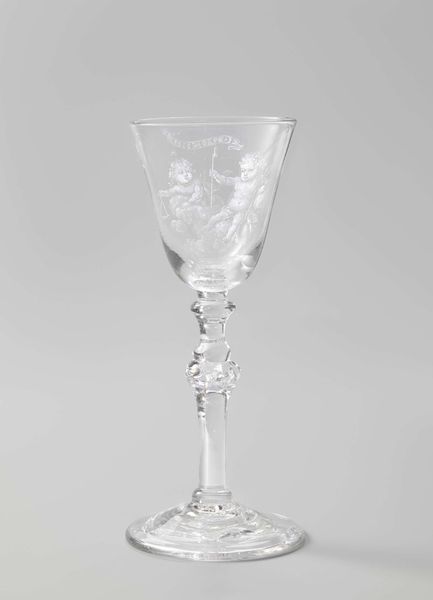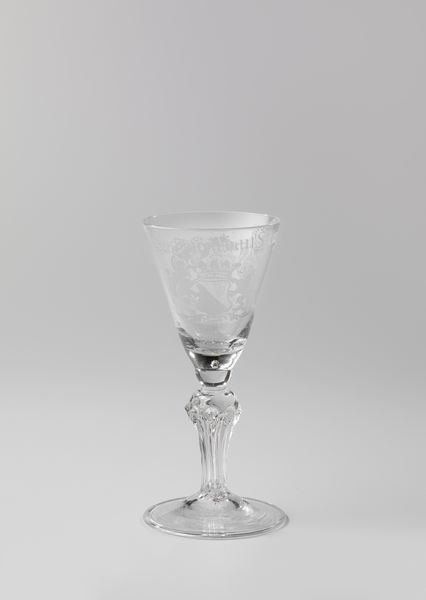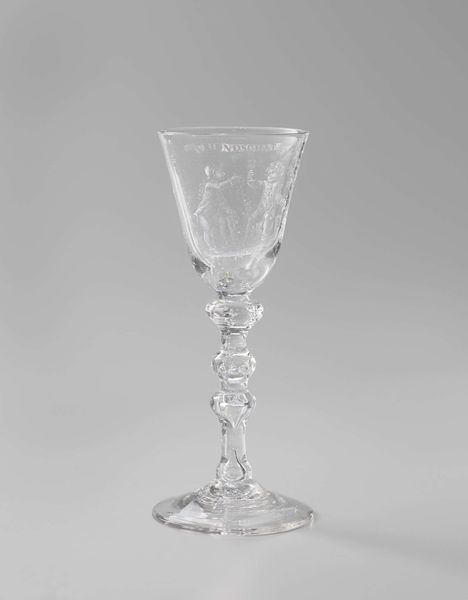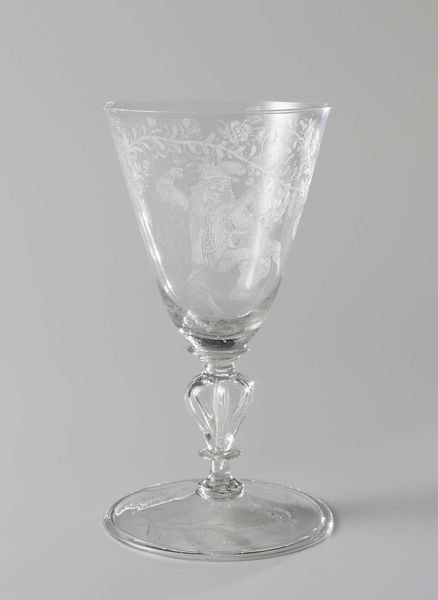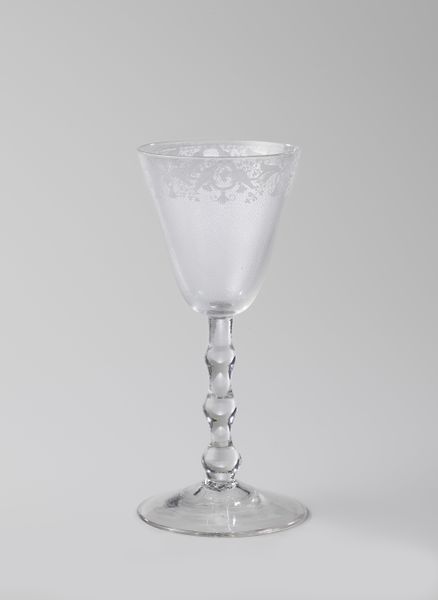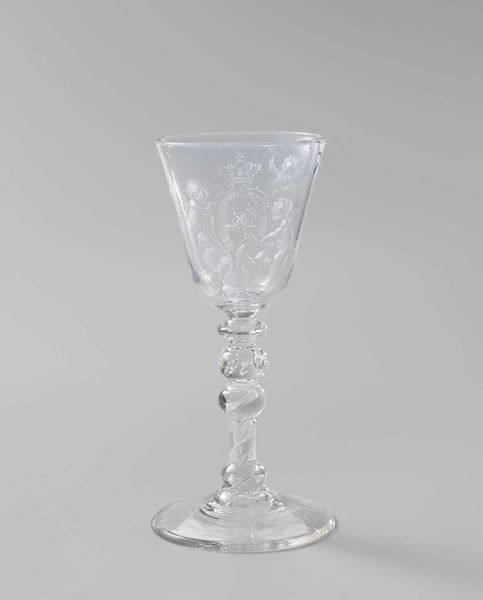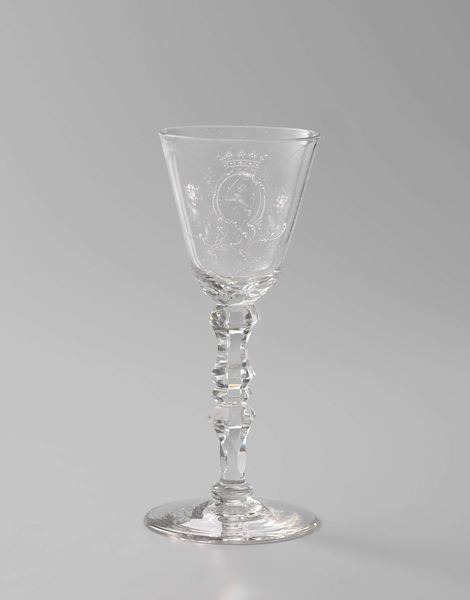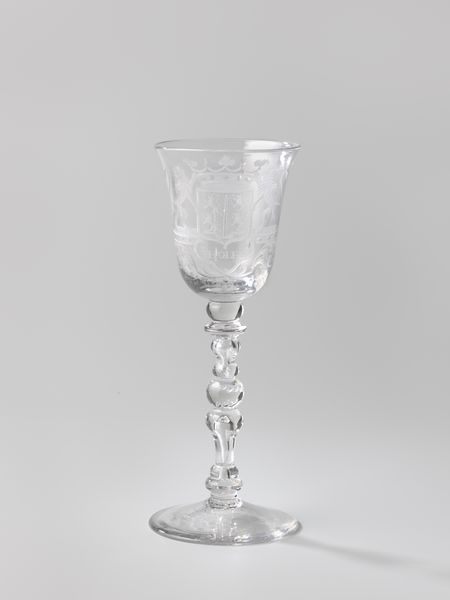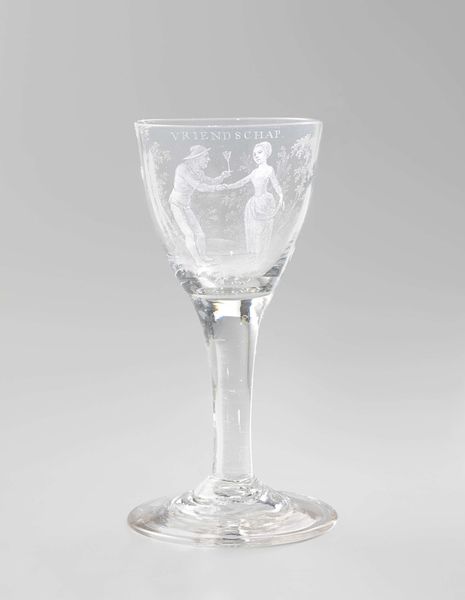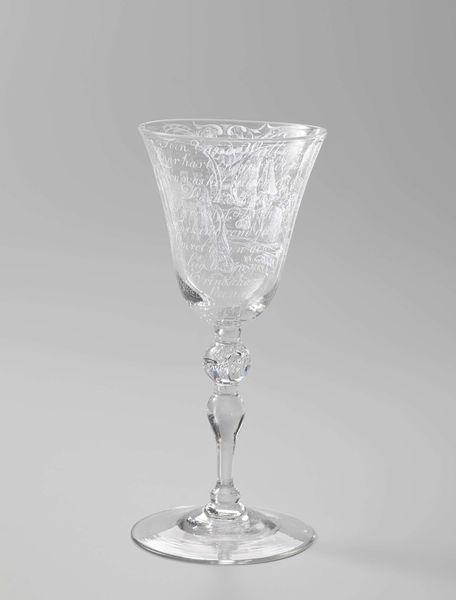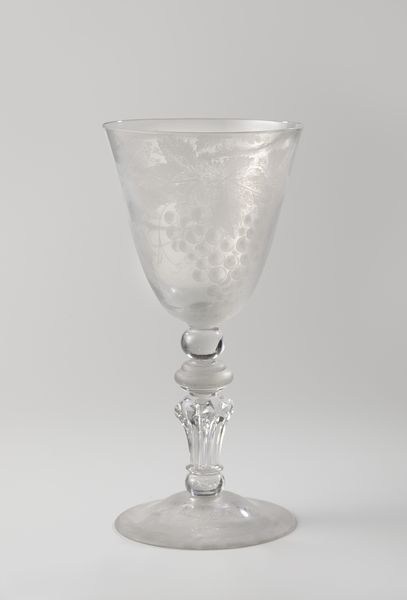
drawing, glass, engraving
#
portrait
#
drawing
#
baroque
#
glass
#
food illustration
#
engraving
Dimensions: height 22.5 cm, diameter 8.5 cm
Copyright: Rijks Museum: Open Domain
Curator: How striking – almost ghostly. I find its austerity captivating. Editor: Indeed. And now we find ourselves gazing at an extraordinary example of Baroque engraving dating back to 1724. What makes it particularly fascinating is that it isn't on paper or canvas, but etched directly onto a wine glass. This piece is aptly called, “Wine glass with a man holding a Berkemeyer". Curator: A glass goblet transforms into a tableau of cultural symbolism! The man’s gaze is piercing and that Berkermeyer he’s holding... wine isn’t merely a drink, is it, but rather the transformation of cultural rituals, the warmth of gathering, almost ceremonial. Editor: Exactly! I think there is something to unpack there. Take notice, for instance, of how the light plays on the curvature of the glass. The engraver utilizes subtle variations in line weight and density to create the illusion of volume and shadow, which gives that portrait depth and brings the figure to life within its transparent frame. Curator: It’s curious how the choice of a wine glass is a key element that shifts the semantic landscape. Had this been an ink drawing on paper, we would perceive it differently, but a wine glass invokes themes of festivity and community, a very communal symbol that adds a new stratum of interpretation. The symbolic implications can become far more powerful. Editor: Well articulated. The decision to inscribe on the glass transforms this very commonplace, practical drinking implement into something extraordinary. Look at how the engraver mastered the very fragile properties of glass to produce detail while preventing catastrophic fragmentation. Curator: So very fragile! A potent reminder of mortality in a space created for convivial rituals. An ephemeral scene captured on a delicate medium, it creates an unusual tension. What did you make of it overall? Editor: For me, it speaks volumes about craftsmanship and its capacity to elevate the everyday, rendering it an emblem of its historical era and a demonstration of refined technique. What an inspired pairing of artistry and function! Curator: I agree completely. The anonymous artist created a beautiful exploration of cultural symbolism and delicate tensions—a wine glass and the ephemerality of shared experiences, all interwoven with visual storytelling.
Comments
rijksmuseum about 2 years ago
⋮
The Dordrecht dealer and collector Frans Greenwood is renowned as the inventor of stipple-engraving. He probably drew his inspiration from mezzotint engravings. Both techniques are well suited conveying ‘half tones’, or the transitions between varying grey tones. This image is based on a mezzotint by Bloteling after a painting by Jan van Mieris. Translation of inscription: Out of sight, out of mind.
Join the conversation
Join millions of artists and users on Artera today and experience the ultimate creative platform.
